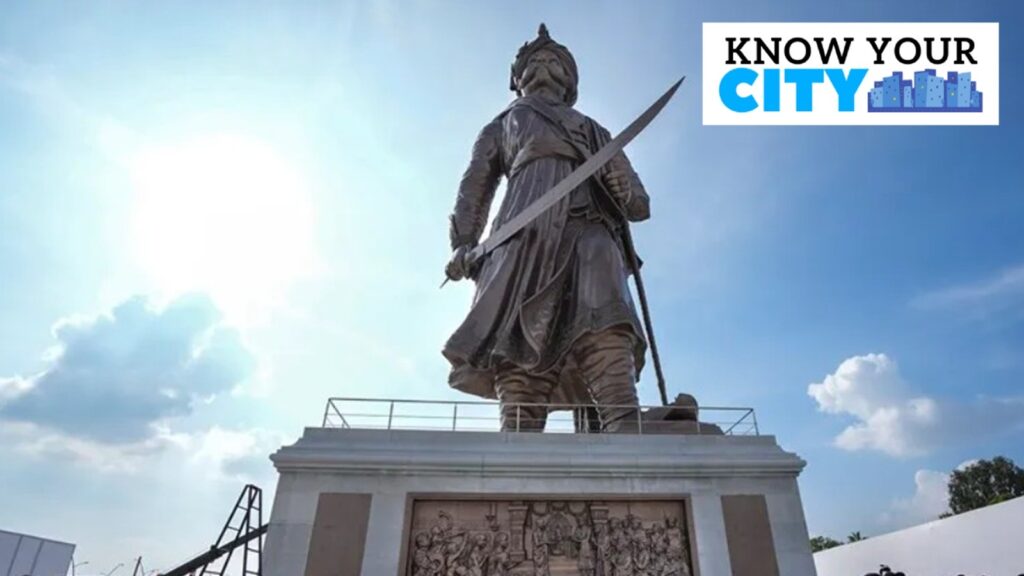Very often, the popular version of Bengaluru’s history starts with its famous founder, Kempe Gowda of the Yelahanka Nada Prabhus. Often, conversations around the city move smoothly from his rule to the fairly modern British-ruled Bangalore, taken as it was from Tipu Sultan. But many a story lies between the day that the Nada Prabhus were forced out of the city, and the day the Wodeyars brought Bangalore into the rapidly rising power that was the Mysore Kingdom.
As it happens, both the Nada Prabhus and the Wodeyars had their roots as feudatories under the powerful Vijayanagara Empire, which, in its heyday, dominated much of South India. But this major polity soon began to disintegrate internally in the wake of the defeat of Rama Raya in the Battle of Talikota in 1565. Thus, Kempe Gowda might have seen the sparks of greater autonomy in his rule of Bengaluru by the end of his life, a few years later.
At the peak of their power, Kempe Gowda’s family ruled Bengaluru, which at the time consisted of a walled town (surviving today as the pete area) that was defended by the precursor of today’s Bangalore Fort. They also held the town of Magadi, with their holdings defended by a fort atop the hill of Savanadurga – an effective defensive position located between Bengaluru and Magadi.
Captured from Kempe Gowda in 1638
However, Bengaluru would not survive as a holding of the family for even a century later as the forces of the Bijapur Sultanate made a southward invasion in 1637. As epigraphist and Kannada scholar B L Rice wrote in Mysore: A Gazetteer Compiled for Government in 1897, “Kempe Gauda, representative of the Yelahanka family, who had by this time grown into a considerable chieftain, holding possession of Bangalore and Magadi, with the impregnable hill fortress of Savandurga, was next attacked, and Bangalore captured from him in 1638.”
Shahaji Bhosle, father of Shivaji, was a major figure in the Bijapur force at the time, and received Bengaluru as a jagir or feudal grant for his efforts. Kempe Gowda (not to be confused with his ancestor and city-founder of the same name) was left with the town of Magadi, while his son was taken hostage.
 Map of Bangalore and its surroundings, circa 1800.
Map of Bangalore and its surroundings, circa 1800.
Shivaji would go on to spend part of his childhood here, while Bengaluru (alongside Thanjavur) would become part of the holdings of his older brother Ekoji. Ekoji is also said to have been a patron of the Kadu Malleshwara temple in today’s Malleshwaram.
By this point, while Mysore might have nominally acknowledged the overlordship of what remained of the Vijayanagara Empire at first, it was practically an independent force by the 1600s, and a growing local power. This is demonstrated by the fact that just a year before, Bengaluru itself was wrested from Immadi Kempe Gowda; Kanthirava Narasaraja Wodeyar, the twelfth ruler of the Mysore dynasty, had already repulsed a Bijapur attack on Srirangapatna.
Story continues below this ad
Historian D S Achuta Rao records that by splitting his forces, the king had launched attacks on Bijapuri forces in Arekere and Hosaholalu, causing obstructions in their movement near Melukote and launching an ambush near the Chamundi hills that caused considerable damage. He then combined his forces to relieve the siege of Srirangapatna, and in the words of Rao, “The besiegers were thoroughly beaten and repulsed with considerable loss in their ranks. Ranadulla Khan was obliged to beat a hasty retreat from Seringapatam (Srirangapatna) and Kanthirava’s troops returned to the capital with immense spoils.”
Rise of Mysore’s power
Under Chikka Devaraja Wodeyar, who ruled from 1675 to 1704, Mysore became a true power in South India. Contemporary local sources depict him as successfully fighting off a raid by Shivaji. Rao records that by 1687, Ekoji was unable to simultaneously govern Thanjavur and Bengaluru.
Thus, with a proposal to sell the city to Mysore for the sum of Rs 3 lakh, a vakil was dispatched from Thanjavur to negotiate the sale. But by this time, Bijapur itself had been overrun by Aurangzeb, and his commander Kasim Khan occupied the city before it could be defended by the Maratha forces. Rao records that this was after the transaction was concluded between Mysore and the Marathas.
Chikka Devaraja was therefore obliged to forcibly remove the Mughals, according to Rao. But this did not seem to have forestalled diplomacy – the Wodeyar possession of Bengaluru was secured by an “amicable arrangement” with Kasim Khan, allowing the use of the place as a “point of communication”, i.e., a supply line for the Mughal forces. And so it was that the city came into the sphere of Mysorean influence, remaining there until the start of British rule.

